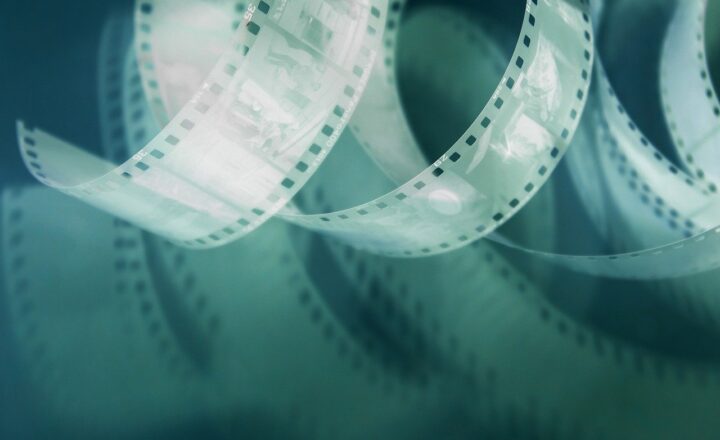Beyond the Screen: The Impact of Literature on Contemporary Movies
November 19, 2024

In the realm of storytelling, literature and cinema coalesce in a dance that creates rich, immersive experiences for audiences. Literature has long served as a cornerstone of the cinematic narrative, weaving intricate webs of character development, thematic exploration, and emotional resonance that breathe life into the moving images on screen. In this article, we will delve into the profound impact literature has on contemporary movies, examining how classic and modern literary works influence film narratives and shape the cinematic landscape.
1. The Interplay Between Literature and Film
The relationship between literature and film is mutualistic; while films often adapt novels and plays, literature also adopts narrative structures and motifs from cinema. One can see this interplay in various forms, from direct adaptations of literary works to films that embrace literary techniques such as non-linear storytelling, complex character arcs, and thematic depth. Today’s filmmakers draw inspiration from a wide spectrum of genres, styles, and voices, making literature a vital source of innovation and creativity in the film industry.
For instance, renowned director Guillermo del Toro frequently cites literary sources as inspiration for his films. His works, such as *Pan’s Labyrinth*, exhibit stylistic influences from fairy tales and Gothic literature, showcasing how literary motifs can transcend their original forms to create powerful visual narratives. Del Toro’s films invite viewers to experience deep emotional connections through storytelling that honors its literary roots.
2. Classic Literature in Adaptations
Classic literature remains a significant source for film adaptations, offering timeless themes and relatable human experiences. In contemporary cinema, adaptations of classical texts often reveal societal reflections and evolution over time. Consider films like *Pride and Prejudice* or *The Great Gatsby*, which retain the core messages of their literary sources while exploring contemporary cultural contexts.
– *Pride and Prejudice* (2005) directed by Joe Wright exemplifies this notion. While remaining faithful to Jane Austen’s narrative, it embodies modern cinematic techniques that enhance emotional engagement, such as vibrant cinematography and powerful performances. The film successfully captures the essence of Austen’s critique on social class and courtship while resonating with today’s viewers.
– Likewise, *The Great Gatsby* (2013) directed by Baz Luhrmann, provides a visually opulent retelling of F. Scott Fitzgerald’s classic. Luhrmann’s adaptation merges the Jazz Age’s glamour with contemporary music, bridging the gap between the past and present while maintaining the novel’s exploration of the American Dream’s complexities and disillusionment.
What can be gathered from such adaptations is the transformative power that literature has on film, breathing new life into old tales and inviting new audiences to explore these foundational stories.
3. Modern Literary Influences
As cinema continues to evolve, contemporary literature also significantly shapes modern films. Many filmmakers actively seek inspiration from diverse novels, short stories, and poetry that reflect today’s societal issues, philosophies, and existential quandaries. These literary influences offer depth and relevance to cinematic narratives.
A prime example is *The Handmaid’s Tale*, adapted from Margaret Atwood’s novel. The television series critically examines themes of misogyny and totalitarianism, challenges audiences to reflect on contemporary socio-political issues, and demonstrates how literature can act as a prophetic voice in film adaptations. Such works provoke thoughtful discussions about the compatibility of literature’s critical engagement with today’s pressing issues.
The success of adaptations like *Little Fires Everywhere* and *Normal People* highlights this trend further. Both series engage with the nuances of human relationships and societal challenges, emphasizing the profound emotional depth that literature provides.
4. Elements of Literary Technique in Film
Beyond direct adaptations, literature influences contemporary cinema through the incorporation of various literary techniques and devices. Filmmakers often utilize literary elements such as symbolism, foreshadowing, and character development to add complexity and depth to their narratives.
For instance, Christopher Nolan’s films, particularly *Inception*, employ sophisticated narrative structures that mirror the complexity of literary texts. The film’s manipulation of time and perspective, akin to literary stream-of-consciousness techniques, creates an immersive experience for viewers that challenges them to engage deeply with the plot and its philosophical implications regarding dreams and reality.
Furthermore, films like *Birdman*, directed by Alejandro González Iñárritu, imitate the style of a single continuous shot, encapsulating the immediacy and fluidity of theatrical performance, thus creating a powerful synergy between cinema and stage literature. The narrative format reflects the complexities of the characters’ emotional struggles, inviting viewers into a visceral experience of their internal conflicts.
5. Conclusion: The Enduring Legacy of Literature in Cinema
The profound impact of literature on contemporary movies demonstrates the timelessness and adaptability of storytelling. As filmmakers navigate the intricate web of influences that characterizes modern film, the literary foundation remains firmly grounded, providing a vast reservoir of inspiration and creativity.
In exploring the enduring legacy of literature, we find that it not only shapes narratives but also deepens our comprehension of the human condition. Through meticulous adaptations and innovative storytelling techniques, the synthesis of literature and cinema offers audiences a chance to explore complex themes, unveil societal truths, and forge emotional connections that transcend the screen.
As we look towards the future of filmmaking, the influence of literature will undoubtedly persist, paving the way for a rich tapestry of stories that challenge, inspire, and resonate with generations to come. By embracing the literary roots of cinema, filmmakers continue to honor the storytellers who have shaped our cultural narratives for centuries. As literature finds expression in moving images, both mediums converge— leading viewers into realms far beyond the screen.








